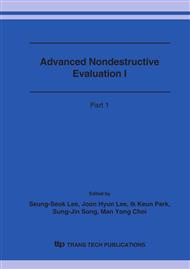p.1192
p.1196
p.1201
p.1205
p.1209
p.1213
p.1217
p.1221
p.1225
Internal Quality Estimation of Watermelon by Multiple Acoustic Signal Sensing
Abstract:
Watermelons are usually sorted by theirs weight and internal quality. Some automated watermelon weight sorters have been developed and operated in watermelon production areas. However, inspection of internal quality of watermelon is still performed by manually. Principal method of identifying internal defect of watermelon is analyzing the percussion sound of watermelon by human experts. Development of non-destructive evaluation technique for internal quality of watermelon is required to reduce human decision errors. The objective of this study was to develop a non-destructive sorting system which can detect internal defect of watermelons. The internal defect evaluation system has a constant-force hitting hammer to generate the acoustic sound, a multi-point sound signal acquiring system, a noise removal circuit, and a signal processing and quality evaluation program. An internal quality prediction model by PLSR (Partial Least Square Regression) was developed by analyzing the percussion sound of watermelons. Using the developed model, the prediction result shows that the overall prediction accuracy was 90.1%, and severely defected watermelons were identified perfectly.
Info:
Periodical:
Pages:
1209-1212
Citation:
Online since:
October 2006
Authors:
Keywords:
Price:
Сopyright:
© 2006 Trans Tech Publications Ltd. All Rights Reserved
Share:
Citation:


